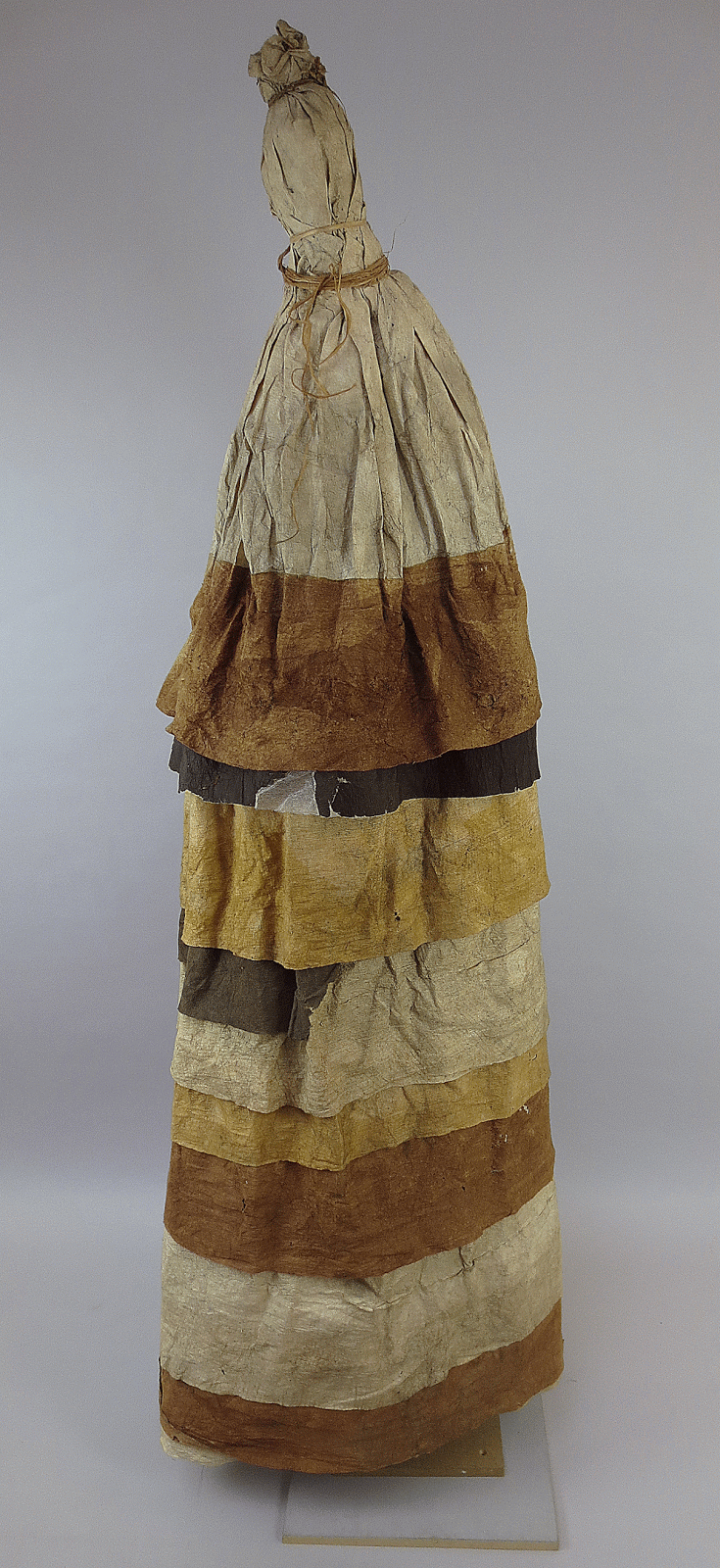Several events related to the Cook-voyage collections have taken place over the last couple of months.
 |
| The Rautenstrauch-Joest Museum, Cologne |
In January I was invited to speak at a conference at the
Rautenstrauch-Joest Museum in Cologne. The symposium, about barkcloth, was called 'Made in Oceania', and I gave a presentation about the Cook-voyage barkcloth at the Pitt Rivers. Other speakers covered subjects as diverse as the cultural meaning of tapa, and presentations about the material qualities of barkcloth, such as dyes and surface decoration. I was grateful to have been asked to speak at this very interesting conference, which is just one of the events accompanying the special exhibition
'Made in Oceania: Tapa - Art and Social Landscapes'. The exhibition is described as presenting 'a number of unique masterpieces from the museum's own
collection in combination with loans from major institutions such as the
Museum of New Zealand Te Papa Tongarewa in Wellington or the Australian
Museum in Sydney. Many of them will be shown in Europe for the first
time. The selection ranges from the oldest objects dating back to the
18th century - the Cook collection - to contemporary artworks from
renowned Polynesian or Melanesian artists like John Pule, Fatu Akelei
Feu'u, Michel Tuffery, Shigeyuki Kihara, Timothy Akis or Mathias Kauage.
Various media such as film or audio stations bring people and stories
behind the objects to life. Connections between past and present,
everyday life and art and from island to island can be independently
discovered.' It runs until the 27th April 2014.
In February, the Pitt Rivers was
pleased to announce that it had been awarded £64,845 from the DCMS/Wolfson Foundation's Museums and Galleries Improvement Fund. The award will allow the museum to purchase a new display case for the Cook-voyage collections, and the case will be big enough to enable objects like the
fau (Tahitian Priest's helmet) and the Tahitian Mourner's costume to be displayed to their full effect for the first time. A generous donation from the
Friends of the Pitt Rivers will help with installation costs.
 |
| A digitally constructed image of the Tahitian Mourner's costume, showing how it will look when redisplayed |
The
fau, along with 18 other Cook-voyage objects, was lent to
The Collection in Lincoln in February, for the exhibition
'Joseph Banks: A Great Endeavour'. The exhibition centres on Benjamin West's portrait of Banks, wearing a Maori cloak (possibly one in the Pitt Rivers Collection, also loaned to the exhibition). Many original illustrations and sketches have been brought together for the exhibition, which runs until the 11th May 2014.
 |
| Portrait of Joseph Banks by Benjamin West, The Collection , Lincoln |
Packing the
fau for loan is difficult, as it is large and fragile. However, we had previous experience of doing this a few years ago, when the headdress was part of the large touring exhibition, "James Cook and the Exploration of the Pacific' which had venues in Bonn, Berne and Vienna. Because packing material might actually damage the structure of the headdress during transit, we developed a system whereby the
fau is held just at the top and bottom. The crate dismantles completely, allowing us to see what's happening as the sides and top are added or removed. A padded post screwed to the bottom of the crate fits inside the headdress and holds the bottom securely, while a cushion, loosely filled with polystyrene beads, is stapled to the lid. This gently folds around the top of the headdress and stops it from moving. The
fau arrived in Lincoln without damage, as did the other objects in the loan.
 |
| The fau, 1886.1.1683, during packing |












